Michael Levin9781574448764, 1574448765
Table of contents :
Front cover……Page 1
Introduction……Page 16
Preface……Page 22
Contents……Page 26
Contributors……Page 32
INTRODUCTION……Page 36
What Is a Physical Quantity?……Page 37
Dimensional Systems……Page 38
Dimensional Homogeneity of Physical Content……Page 39
Table 3 Important Secondary Measuring Units in the Mechanics,……Page 40
DETERMINATION OF A PI SET BY MATRIX CALCULATION Establishment of a Relevance List of a Problem……Page 43
Determination of the Process Characteristics……Page 46
FUNDAMENTALS OF THE THEORY OF MODELS AND OF SCALE-UP Theory of Models……Page 47
Model Experiments and Scale-Up……Page 48
FURTHER PROCEDURES TO ESTABLISH A RELEVANCE LIST Consideration of the Acceleration Due to Gravity g……Page 49
Introduction of Intermediate Quantities……Page 50
Material Systems of Unknown Physical Properties……Page 51
Short Summary of the Essentials of Dimensional Analysis and Scale-Up……Page 53
Table 4 Important Named Dimensionless Numbers……Page 54
Area of Applicability of Dimensional Analysis……Page 55
Experimental Methods for Scale-Up……Page 56
Partial Similarity……Page 57
TREATMENT OF VARIABLE PHYSICAL PROPERTIES BY DIMENSIONAL ANALYSIS……Page 58
Pi Set for Temperature-dependent Physical Properties……Page 59
Non-Newtonian Liquids……Page 61
Pseudoplastic Fluids……Page 62
Viscoelastic Liquids……Page 63
PI SET AND THE POWER CHARACTERISTICS OF A STIRRER IN A VISCOELASTIC FLUID……Page 64
APPLICATION OF SCALE-UP METHODS IN PHARMACEUTICAL ENGINEERING Optimum Conditions for the Homogenization of Liquid Mixtures……Page 66
APPENDIX Nomenclature……Page 87
REFERENCES……Page 88
INTRODUCTION AND BACKGROUND……Page 92
MODEL-BASED OPTIMIZATION……Page 97
PROCESS SCALE-UP……Page 100
PROCESS CONTROL……Page 101
CONCLUSIONS……Page 103
REFERENCES……Page 104
INTRODUCTION……Page 106
GEOMETRIC SIMILARITY……Page 107
Table 1 Most Common Values Assigned to the Power Law Exponent, n, When……Page 108
DIMENSIONLESS NUMBERS METHOD……Page 109
SCALE-OF-AGITATION APPROACH……Page 110
Table 2 Nomenclature……Page 111
Table 3 Process Requirements Set Degree of Agitation for Blending and Motion……Page 112
SCALE-OF-AGITATION APPROACH EXAMPLE……Page 113
LATEST REVISIONS OF THE APPROACH……Page 115
Table 4……Page 118
Table 5 Process Requirements Set Degree of Agitation for Solids Suspension……Page 119
HEAT TRANSFER SCALE-UP CONSIDERATIONS……Page 120
CONCLUSIONS……Page 121
REFERENCES……Page 122
INTRODUCTION……Page 124
TRANSPORT PHENOMENA IN LIQUIDS AND SEMISOLIDS AND THEIR RELATIONSHIP TO UNIT OPERATIONS AND SCALE-UP……Page 126
Transport Phenomena and Their Relationship to Mixing as a Unit Operation……Page 128
Particle Size Reduction……Page 136
Mass Transfer……Page 143
Heat Transfer……Page 145
HOW TO ACHIEVE SCALE-UP……Page 146
Principles of Similarity……Page 147
Table 1 Area- and Volume-Dependence on Scale-Up Ratios……Page 150
Table 2 Influence of Size on System Behavior or Important Unit Operation……Page 151
Dimensions, Dimensional Analysis, and the Principles of Similarity……Page 152
Mathematical Modeling and Computer Simulation……Page 156
Table 3 Shear Rates at Different Processing Scales……Page 157
SCALE-UP PROBLEMS……Page 158
CONCLUSIONS……Page 159
REFERENCES……Page 160
Advantages of Biologics as Therapeutic Agents……Page 164
General Considerations in the Development and Scale-Up of Cell Culture Processes……Page 165
Bioreactor Operation……Page 169
Table 1 Examples of Biotechnology-Derived Products……Page 170
Table 1 Examples of Biotechnology-Derived Products (Continued )……Page 171
Filtration Operations……Page 172
Centrifugation……Page 173
Dimensional Analysis……Page 174
SCALE-UP OF UPSTREAM OPERATIONS……Page 175
Medium Preparation……Page 176
Bioreactor Operation……Page 177
Harvest Operation……Page 180
DOWNSTREAM OPERATIONS Design of Purification Processes……Page 181
Table 2 Antibody Purification Process Scale-Up and Performance for Different……Page 182
Viral Clearance……Page 183
PROCESS CONTROLS……Page 184
FACILITY DESIGN……Page 185
EXAMPLES OF PROCESS SCALE-UP……Page 186
IMPACT OF SCALE-UP ON PROCESS PERFORMANCE AND PRODUCT QUALITY……Page 189
SUMMARY……Page 190
FINAL REMARKS AND TECHNOLOGY OUTLOOK……Page 191
REFERENCES……Page 192
BACKGROUND……Page 196
GENERAL MIXING GUIDELINES Defining Mixedness……Page 197
Mixing Issues in Tumbling Blenders……Page 198
Process Parameters……Page 199
SCALE-UP APPROACHES……Page 200
Applying Rayleigh’s Method……Page 201
Correlating Particle Velocities to Vessel Rotation Rate and Radius……Page 202
Returning to Dimensional Analysis……Page 206
TESTING VELOCITY SCALING CRITERIA……Page 208
Table 2 Vessel Dimensions……Page 209
THE EFFECTS OF POWDER COHESION……Page 210
RECOMMENDATIONS AND CONCLUSIONS……Page 213
REFERENCES……Page 214
INTRODUCTION……Page 216
How Do Powders Flow?……Page 217
How Do Powders Segregate?……Page 221
Analysis of Flow……Page 224
Scaling Segregation……Page 229
Avoiding Segregation……Page 230
REFERENCES……Page 232
INTRODUCTION……Page 234
THEORETICAL CONSIDERATIONS The Principle of Similarity……Page 235
THE DRY-BLENDING OPERATION……Page 236
SCALE-UP AND MONITORING OF THE WET GRANULATION PROCESS Dimensionless Groups……Page 237
Experimental Evidence for Scale-Up Invariables……Page 239
Mechanistic Understanding of the Wet Agglomeration Process and the Power Consumption Profile……Page 241
The Use of Power Consumption Method in Dosage Form Design……Page 244
Table 1 Physical Characteristics of the Starting Material……Page 245
The Myth of the Granulation End-Point……Page 246
Some Hints Concerning the Wet Agglomeration Process in a High-Shear Mixer to Avoid Problems……Page 248
A QUASI-CONTINUOUS GRANULATION AND DRYING PROCESS (QCGDP) TO AVOID SCALE-UP PROBLEMS Continuous Processes and the Batch Concept……Page 249
Development of the Quasi-Continuous Production Line for Granules……Page 250
Description of the Production Plant……Page 253
SCALE-UP OF THE CONVENTIONAL FLUIDIZED BED SPRAY GRANULATION PROCESS Introduction……Page 255
Equipment Considerations……Page 256
Scale-Up Considerations……Page 259
Table 4 Estimations of Process Air Volume in Scale-Up as a Function of Product……Page 261
Table 5 Equations for Heat and Mass Transfer in a Wet Granule……Page 263
SUMMARY……Page 269
REFERENCES……Page 270
PROLOGUE……Page 272
SCALE-UP BACKGROUND……Page 273
SCALE-UP TECHNICAL ILLUSTRATIONS……Page 274
Carver Press Scale-Up to Roller Compactor……Page 275
Table 1 Granulometry of Powder Blends Manufactured Using Slugging Technology……Page 276
Table 3 Granulometry of Powder Blends Manufactured Using Slugging Techno-logy……Page 277
Wet Granulation Technology vs. Slugging Technology vs. Roller Compaction Technology……Page 278
Roller Compactor Pilot to Scale-Up Level……Page 279
Table 8 Powder Properties from Non-Roller Compacted Formulation and Powder……Page 282
Roller Compactor Development to Manufacturing Scale-Up Using Active and Placebo Blends……Page 284
Table 11 Expanded AW 50 Operating Conditions for 5% Active Granulation with……Page 285
Table 12 AW 50 and 200 Compactor Conversion Pressing Power……Page 286
Roller Compaction Scale-Up Using Near Infrared (NIR) Technology……Page 287
NIR Monitoring of Roller Compaction Scale-Up……Page 291
Table 14 Root Mean Squares Errors for the NIR-PLS Predicted Values of……Page 294
Table 15 APAP Content, RH and Pressure Combinations Selected Using the……Page 295
CONCLUSION……Page 299
REFERENCES……Page 300
INTRODUCTION……Page 302
Fluidization Theory……Page 303
SYSTEM DESCRIPTION……Page 308
Air Handling Unit (AHU)……Page 309
Product Container and Air Distributor……Page 310
Spray Nozzle……Page 311
Disengagement Area and Process Filters……Page 315
Exhaust Blower or Fan……Page 317
Laboratory Units……Page 318
PARTICLE AGGLOMERATION AND GRANULE GROWTH……Page 319
Granulation Mechanisms……Page 321
FLUID-BED DRYING……Page 323
PROCESS AND VARIABLES IN GRANULATION Granulation Process……Page 326
Variables……Page 327
Table 1 Heat of Vaporization for Commonly Used Solvents……Page 329
PROCESS CONTROLS AND AUTOMATION……Page 335
Table 3 Significant Variables and Their Impact on the Fluid-Bed Granulation……Page 336
Table 4 A and B Influence of Operating and Material Parameters on the……Page 337
Near-Infrared (NIR)……Page 338
PROCESS SCALE-UP Overview……Page 340
Regulatory Perspective……Page 341
Scale-Up and Equipment Design……Page 342
Process Control and Scale-Up……Page 343
Table 5 Scale-Up Process Parameters from 15 kg to 150 kg Batch……Page 345
Loading……Page 346
Unloading……Page 348
SUMMARY……Page 351
REFERENCES……Page 353
INTRODUCTION……Page 360
EXTRUSION-SPHERONIZATION—AN OVERVIEW……Page 361
EXTRUSION……Page 363
Equipment Design……Page 364
Process Control and Scale-Up……Page 369
Table 3 An Overview of Extruders of Varying Scales and Capacities……Page 371
Table 4 Geometric Scaling Ratios of Primary and Secondary Variables for Screw……Page 372
Table 5 An Overview of Formulation, Process, and Equipment Design Variables……Page 373
Table 6 Examples of End-point Metrics for Product……Page 376
Table 7 Critical Variables in Scale-Up of Extrusion……Page 383
Mechanistic Aspects of Spheronization……Page 384
Table 8 An Overview of Spheronizers of Varying Scales and Capacities……Page 385
End Point Determination……Page 388
Table 9 Typical Shape Indices of Pellets……Page 389
Process Control and Scale-Up……Page 391
Moisture Content and Content Uniformity……Page 396
Particle Size and Size Distribution……Page 397
Rheology and Flow of Wet Mass……Page 398
SUMMARY……Page 399
REFERENCES……Page 400
INTRODUCTION……Page 406
COMPACTION PHYSICS Compression and Consolidation……Page 407
Excipients……Page 409
PREDICTIVE STUDIES……Page 410
Indices and Related Parameters……Page 411
Simulation……Page 414
Pilot Work……Page 418
SCALE-UP/VALIDATION Scale-Up Process……Page 423
Specifications……Page 424
Troubleshooting……Page 426
Table 2 Hypothetical In-House In-Process Tableting Controls……Page 427
Table 3 2……Page 428
Table 6 Pilot Scale Condtions……Page 432
Scale-Up of a Sustained Release, Wet Granulation Tableting Process……Page 434
Table 7 Compression Parameters for Scale-Up Batch 1……Page 435
Scale-Up of a Dry Granulation Tableting Process……Page 436
Scale-Up of a Bilayered Tableting Process……Page 437
PROCESS ANALYTICAL TECHNOLOGY……Page 440
REFERENCES……Page 442
INTRODUCTION……Page 444
TYPES OF FILLING MACHINES AND THEIR FORMULATION REQUIREMENTS……Page 445
Dosator Machines……Page 446
Dosing Disc Machines……Page 448
GENERAL FORMULATION PRINCIPLES……Page 453
ROLE OF INSTRUMENTED FILLING MACHINES AND SIMULATION……Page 455
SCALING-UP WITHIN THE SAME DESIGN AND OPERATING PRINCIPLE Regulatory Meaning of Same Design and Operating Principle……Page 456
Scaling-Up Within the Same Subclass……Page 457
Table 1 Comparison of Three Bosch GKF Models……Page 458
Transferring Between Dosator and Dosing Disc Machines……Page 461
GRANULATIONS……Page 464
REFERENCES……Page 465
INTRODUCTION Overview of Coating Processes……Page 470
Table 1 Example of Application of Thermodynamic Model to Predict Adjustments……Page 474
SCALING-UP THE COATING PROCESS General Factors to Consider……Page 476
Scaling-Up a Pan-Coating Process……Page 480
Table 2 Coated Product Attributes and Coating Process Characteristics That May……Page 481
Table 3 Process Parameters Examined in a Study Designed to Optimize a Coating……Page 482
Table 4 Typical Results Obtained in Optimization Study……Page 483
Table 5 Estimating Pan Speed on Scale-Up……Page 485
Table 6 Influence of Spray Pattern Used on Tablet Quality……Page 488
Table 7 Example of Operating Parameter Ranges Used When Scaling-Up an……Page 490
Table 8 Ranges of Process Variables Used During Optimization of the Enteric……Page 496
Table 9 Coating Process Details Used in Scaling-Up an Aqueous Enteric-Coating……Page 498
Table 11 Features and Uses of the Three Concepts for Fluid-Bed Film Coating……Page 499
Scaling-Up Fluid-Bed Coating Processes……Page 500
Table 12 Coating Process Conditions Used in the Scaling-Up of the Wurster……Page 509
Table 14 Summary of Ranges Obtained for Response Variables……Page 511
Table 16 Details of Coating Procedures Used in Scaling-Up the Wurster Process……Page 513
ALTERNATIVE CONSIDERATIONS TO SCALING-UP COATING PROCESSES……Page 514
Continuous Coating Processes Based on Existing Film-Coating Technologies……Page 515
Continuous Processes Based on Electrostatic Powder Deposition……Page 517
REFERENCES……Page 519
PROLOGUE……Page 522
THE PAT TEAM AND MANUFACTURING SCIENCE WORKING GROUP REPORT: A SUMMARY OF LEARNING, CONTRIBUTIONS AND PROPOSED NEXT STEPS FOR MOVING TOWARD THE ‘‘DESIRED STATE‘‘ OF PHARMACEUTICAL MANUFACTURING IN THE 21ST CENTURY Executive Summary……Page 523
Introduction……Page 526
The ‘‘Current State’’ and the ‘‘Desired State’’ of Pharmaceutical Manufacturing in the 21st Century……Page 528
Accomplishments: Primary Objectives……Page 540
A Systems Perspective: ‘‘Points to Consider’’……Page 546
PRODUCTION SYSTEM……Page 550
Collaborations and Recommendations……Page 552
Next Steps and Considerations for the Critical Path Initiative……Page 554
The PAT Team Members Include:……Page 558
The Manufacturing Science Working Group Members include:……Page 559
BIBLIOGRAPHY AND REFERENCES……Page 560
Index……Page 566
Back cover……Page 574
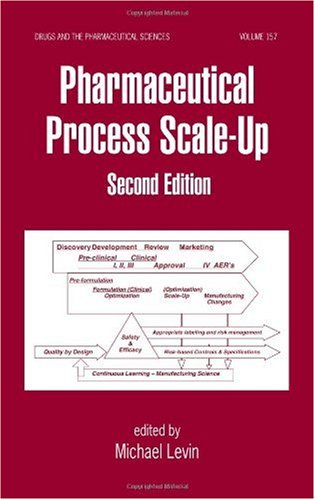


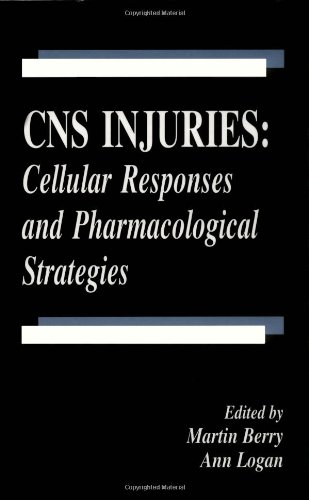
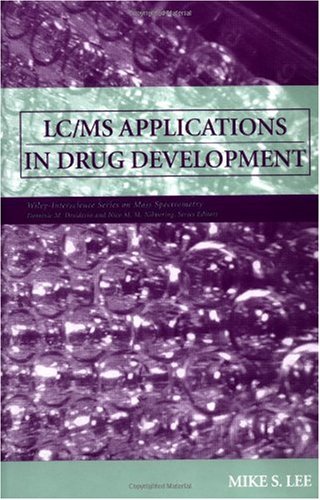
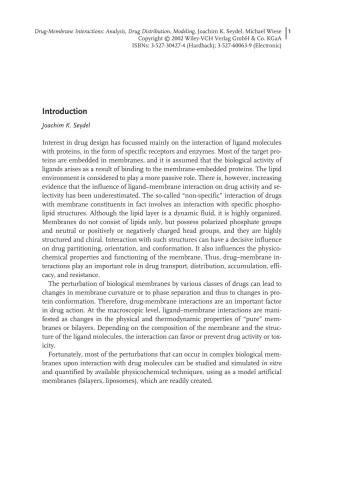
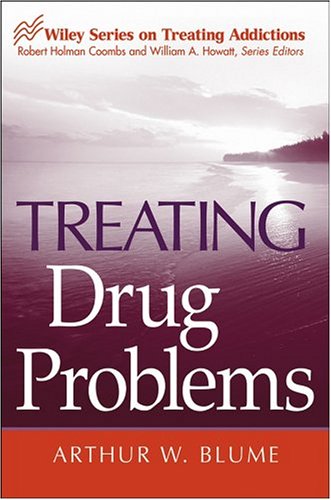
Reviews
There are no reviews yet.